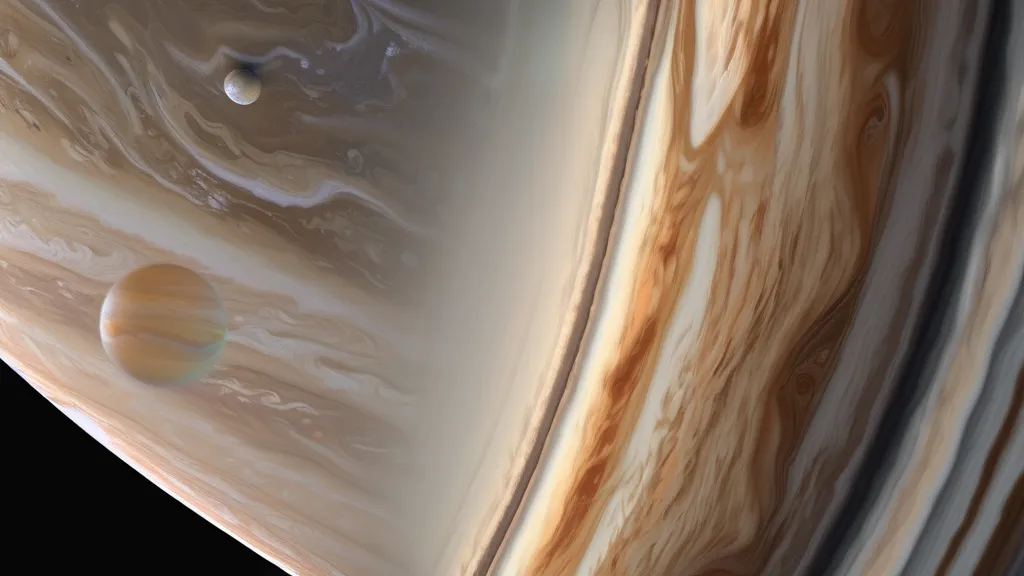The Art of Remote Spacecraft Repair: How NASA's Innovative Fix Restored JunoCam
Harnessing Innovation: Remote Repairs in the Deep Cosmos

- JunoCam initially survived 46 orbits around Jupiter.
- Radiation damage posed unique repair challenges.
- NASA utilized annealing to fix the camera remotely.
- Successes offer insights for future spacecraft resilience.
Watching Humanity’s Reach Extend
In the relentless pursuit of unearthing cosmic secrets, NASA has consistently pushed the boundaries of engineering and technology. The story of JunoCam—a visible-light camera aboard NASA’s Juno spacecraft orbiting Jupiter—is one such tale of innovation, ushering in a new era of remote problem-solving in space technology.
When launched in 2011, Juno was equipped with a suite of scientific instruments designed to peer beneath Jupiter’s dense clouds. Among them was the JunoCam, intended to enhance public engagement rather than scientific discovery, yet it quickly became invaluable. Designed for just eight orbits, as of its 46th journey around the gas giant, JunoCam remained resilient. However, by the 47th orbit, the telltale signs of radiation damage started to emerge—a formidable challenge given Jupiter’s intense environment.
A Crisis 370 Million Miles Away
NASA’s Jet Propulsion Laboratory (JPL) diagnosed the issue: a damaged voltage regulator in JunoCam’s power supply, unable to withstand the intense radiation outside Juno’s titanium vault. With over 370 million miles (approximately 595 million kilometers) separating Earth and Juno, replacing the hardware was impossible. This necessitated an unprecedented solution—an attempt to anneal the instrument.
The Annealing Experiment
Annealing, a process where materials are heated and then slowly cooled to alter their structure at a microscopic level, was hypothesized as a potential fix. “We knew annealing can sometimes alter a material like silicon at a microscopic level but didn’t know if this would fix the damage,” commented Jacob Schaffner, a JunoCam imaging engineer.
Heaters were commanded to raise the temperature of the camera to 77 degrees Fahrenheit, much warmer than typical, providing a real-time experiment of engineering resilience. Astonishingly, the annealing worked; JunoCam resumed producing high-quality images, bursting with the vibrant details of Jupiter’s atmospheric phenomena, albeit temporarily.
Learning from Space-Borne Challenges
The successful temporary fix underscores vital lessons in managing spacecraft subjected to harsh environments. When JunoCam’s quality declined again, NASA repeated the annealing process, turning up the heater to maximum. This second intervention restored image quality, fortuitously timed with Juno’s crucial flyby of the Jovian moon Io in late 2023.
NASA’s endeavors with JunoCam underscore an essential narrative: resilience in the face of adversity. Scott Bolton, the principal investigator from the Southwest Research Institute, noted, “Juno is teaching us how to create and maintain spacecraft tolerant to radiation, providing insights that will benefit satellites in orbit around Earth”—a testament to the strategy’s broader implications.
The Implications and Beyond
NASA’s annealing experiment provides a profound lesson in spacecraft survivability. With continued advancements, techniques like these could extend the life of satellites in Earth’s orbit, overcoming radiation hurdles—a critical improvement for both commercial and defense infrastructures.
While JunoCam has left an indelible mark on both engineering curiosities and our visual understanding of Jupiter, its future remains uncertain. As it continues its rounds, punctuating Jupiter’s nights with its silent, solitary observations, the final fate of the camera has not been revealed.
Contextualizing Juno’s Achievement
The lessons from Juno’s mission go beyond hardware fixes. NASA’s ability to perform effective remote troubleshooting speaks of a future where spacecraft could become self-sustaining, employing onboard systems for repair and maintenance—a significant leap toward autonomous operational capabilities.
From a broader perspective, these developments illuminate a path for more resilient space missions. Future endeavors will likely involve incorporating redundant systems capable of initiating similar fixes independently, a step closer to long-term space habitation and interplanetary exploration.
A Multidimensional View
While the annealing success story contains elements of triumph, it also invites contemplation over the limitations of current technology. As we navigate these challenges, questions emerge around investment in research for new materials resilient to the harshest cosmic conditions—could the next breakthrough lie in synthetics or nanotechnology?
Balancing optimism with pragmatism, this chapter in JunoCam’s journey serves as a precursor to the imminent challenges space agencies will face when operating in unforgiving environments.
Conclusion
The Juno mission, particularly the JunoCam’s saga, is emblematic of human ingenuity. As we chart uncharted territories, these incremental advances herald a future where space exploration becomes more sustainable and less inhibited by distance or environment. Juno is proving that with enough innovation, even the most daunting of challenges can be met head-on.
Reflecting on these insights, we should ask ourselves: What if spacecraft one day became entirely self-repairing? As possibilities advance, so too must our aspirations for planetary exploration, encouraging us to ponder how these burgeoning technologies could alter our perceptions of what is achievable.
In a world where the universe remains the final frontier, lessons learned from Juno present a beacon of possibility—illuminating a course towards a more connected, informed exploration beyond Earth.
References
Call to Action
What innovations do you think are vital for the future of space exploration? Share your thoughts and let’s delve into creating a new space-faring reality.